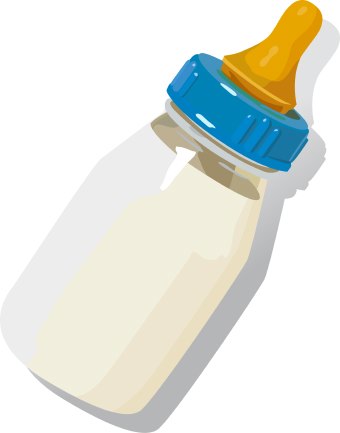 Providing expressed breastmilk is an alternative to nursing for mothers who either have difficulty with latch, are working or otherwise away from their baby, or who find it more convenient. Nursing frequently and on demand is the best way to stimulate milk production in the early days after baby is born, but pumping can provide extra stimulation for milk production or relief from a painful latch if necessary.
Providing expressed breastmilk is an alternative to nursing for mothers who either have difficulty with latch, are working or otherwise away from their baby, or who find it more convenient. Nursing frequently and on demand is the best way to stimulate milk production in the early days after baby is born, but pumping can provide extra stimulation for milk production or relief from a painful latch if necessary.
In addition, pumping can be initiated around 4 weeks of life to gradually accumulate a stash of milk for the first day back to work for mothers who are planning to provide expressed milk for their infants while away. This is also an excellent strategy for someone who wants to accumulate a small stash for emergencies or date nights. Pumping here or there throughout the day to alleviate engorgement early on, or pumping right after a feed will allow you to accumulate even just 0.5-1oz at a time. This can be combined and subsequently frozen (see below for storage instructions). Alternatively, you can add a pump session in the morning ~1 hour after baby’s morning feed. Keep in mind that supply = demand, and that what you pump stimulates your body to make more milk. Accumulating milk gradually is preferable to aggressively pumping and creating oversupply, which can lead to future extra pumping sessions, engorgement, and mastitis. Avoid over-pumping because this creates a vicious cycle of increased milk production which leads to further pumping. Research indicates that breastfed babies take on average between 24-30oz of milk in a 24 hour period, which translates to about 2-3oz every 2-3 hours. Keep in mind that every baby is slightly different, and that breastfed babies tend to take smaller volumes more frequently which is completely normal. You really only need to accumulate enough milk for the first day away; after the first day at work, you will be providing the milk you pumped the previous day.
To store breast milk, make sure you are pumping milk into BPA-free storage bottles or bags. It is safe to store breast milk at room temperature for 6-8 hours, in the fridge for 5 days, and in the freezer for 3-6 months. (An easy way to remember this is the “rule of 5s” – 5 hours on the counter, 5 days in the fridge, and 5 months in the freezer.) For a chest or upright deep freezer with a temp of -4 degrees F, milk can be stored up to 12 months. It is best to keep milk towards the back of the refrigerator or freezer to maintain a constant temperature. Using the newest milk is preferable because some research indicates that breastmilk changes composition as baby ages, so more recent milk more closely matches the baby’s nutritional needs. Prior to feeding baby, gradually warm the milk to room temperature or slightly warmer. This can be done by warming a bowl or pot of water and placing the bottle with milk in the warm water for a minute or two, or by holding the milk under running warm water. Never microwave the breastmilk as this can heat unevenly and cause “hot spots” that can scald baby. Additionally, heating milk too much can denature the proteins in the milk, rendering antibodies ineffective. Thaw milk from the freezer by placing in the refrigerator or cool water. Thawed milk must be used within 24 hours. Remember that the fatty portion of the milk will separate when stored and form a layer on top of the milk, so the milk should be gently swirled prior to feeding baby to redistribute.

